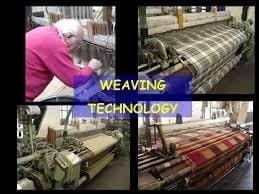Technological advancement is need of the hour. Technology developers are constantly innovating to produce & upgrade technology of machineries that increase production, save time & make process simpler. Every now & then new technologies are introduced that brings massive change in production quantity, improvement in quality and operating time or ease out the process. All these advantages come with a price, it demands additional capital investment.
Today for completing a single process there are multiple technologies available that do the same work in multiple ways. So when it comes to selection of a technology for textile machineries people just don’t jump to the latest version like in the case of smart phones. A detailed comparison of price to the need of advancement is carried out along with analysis of advantages that the technology will offer.
Global Textile machinery market is witnessing tremendous growth buoyed by growing demand of textile & apparel market. It is forecasted to grow at a CAGR of 14.02% till 2018. The major countries manufacturing textile machinery are Germany, Italy, Switzerland, Japan, France and now China. The textile technologies are available in two version low cost (semi automatic) mostly manufactured in China for low cost countries and high cost (automatic) for developed countries.
The Indian textile Machinery industry is nearly sixty years old and has more than 1000 machinery and component manufacturing units. Nearly 300 units produce complete machinery and the remaining produces various textile machinery components. We all know that India is the global leader in textiles next to China. We are having best quality of cotton and producing finest quality of yarns, fabrics & garments. But unlike China, we do not have in house manufacturing of textile machineries. Most of the machineries are being imported. India in 2016-17 imported machineries worth Rs. 14,990.83 Cr. We are importing a lot of textile machinery as there are only a handful of quality machinery manufacturers in India.
There is hardly any Indian machinery manufacturer manufacturing machines for weaving, knitting that provides high level of quality standard and performance to compete with the European manufacturers
Weaving machines have undergone tremendous modifications in last three decades ultimately resulting in improved quality and production. In past, major developments in weaving machinery have been primarily geared up with objective of higher productivity, better quality, reduction in number of operations through automation & reduce cost of production. From 2013-14 to 2015-16 the import of weaving machineries has increased with a CAGR of 13%. But in recent years, beside above flexibility & improvement in machine utilization are receiving more attention by machinery manufacturers.
From handloom to power looms & then automatic shuttle and thereafter shuttleless looms have taken this industry to a new level. Shuttleless machines have not only increased productivity, efficiency but have also made possible the production of fault free fabrics. In case of Rapier looms recently various developments have taken place in filling insertion, shedding mechanism, let-off mechanism, take-up mechanism, selvedge, quick style change to name a few. Around 2.701 Million registered looms in powerloom industry are producing 54,000 sq. mtr fabric.
Some of the past developments in weft insertion systems are Shuttle looms, Projectile looms, Rapier looms, Airjet looms etc. Apart from the various weft insertion systems, some of the remarkable developments in weaving have been higher production system, microprocessor application, information technology, quick style change system, energy conservation, safety measures etc.
The emphasis on productivity and quality has developed the weaving technology very much and as a result the working hours required to weave fabric from loom have been reduced from about 20 to 0.25 during the last 125 years, and in the last 50 years there has been a reduction of 95% inoperative hours per standard unit produced.
Conclusion – Having a textile culture and one of the renowned countries in textile trade, there are millions of opportunities in machinery manufacturing sector especially the untapped sector like weaving machinery manufacturing. We need to focus more on Research & Development (R&D) to manufacture high standard textile machinery which is required for our own consumption, so that we can reduce imports. Due to our strategic location, we can also explore possibilities of exporting appropriate technology to other developing countries like Bangladesh, Vietnam, Sri Lanka, Cambodia, etc.
It is necessary that we strategies & invest in R& D. Our education pattern should develop research and innovation based concepts for Textile Engineering students so that the real growth happens within our country

